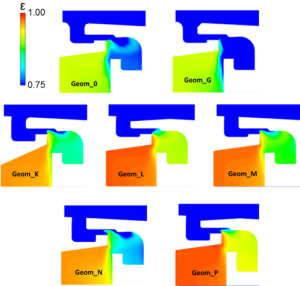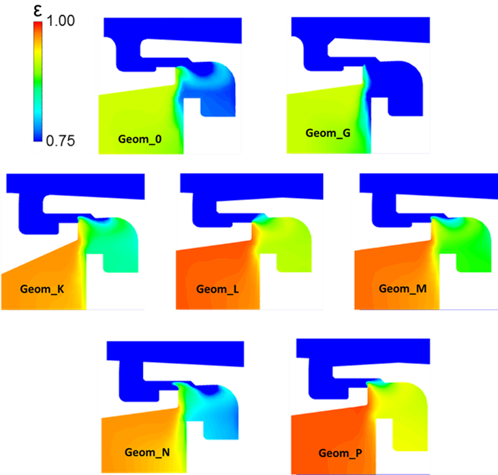ASME Turbo Expo 2018 – GT2018-75712
The desired reduction of secondary air consumption of gas turbines is especially challenging when the sealing of stator-rotor cavities is concerned, where it is necessary to guarantee integrity against hot gas ingestion. Sealing and thermal performance of gas turbine stator-rotor cavities are directly dependent on the rim configuration. This paper provides a CFD-based characterization of heavy-duty gas turbine wheel-spaces when dealing with real engine operating conditions and geometries. Focusing on the rim seal configuration, the geometrical arrangement of the ingestion-cavity, the buffer-cavity and the inner cavities were investigated to improve the ingress flow-discouraging behaviour. The study reveals that the most important geometrical parameters affecting the rim sealing effectiveness are those related to the ingestion-cavity. Moreover, an empirical model to predict the stator-rotor cavity sealing performance in off-design conditions was proposed. The model, that consists in an extension of a well-known literature approach, performed well at the analysed operating conditions, confirming to be an excellent tool for the early design phases. Finally, an investigation on the unsteady behaviour of the seal highlights a coupling with an acoustic mode of the cavity, suggesting possible reasons to justify the presence of rotating structures embedded into the cavity flow.
http://proceedings.asmedigitalcollection.asme.org/proceeding.aspx?articleid=2701085
https://www.researchgate.net/publication/327406498_Effect_of_Rim_Seal_Configuration_on_Gas_Turbine_Cavity_Sealing_in_Both_Design_and_Off-Design_Conditions


